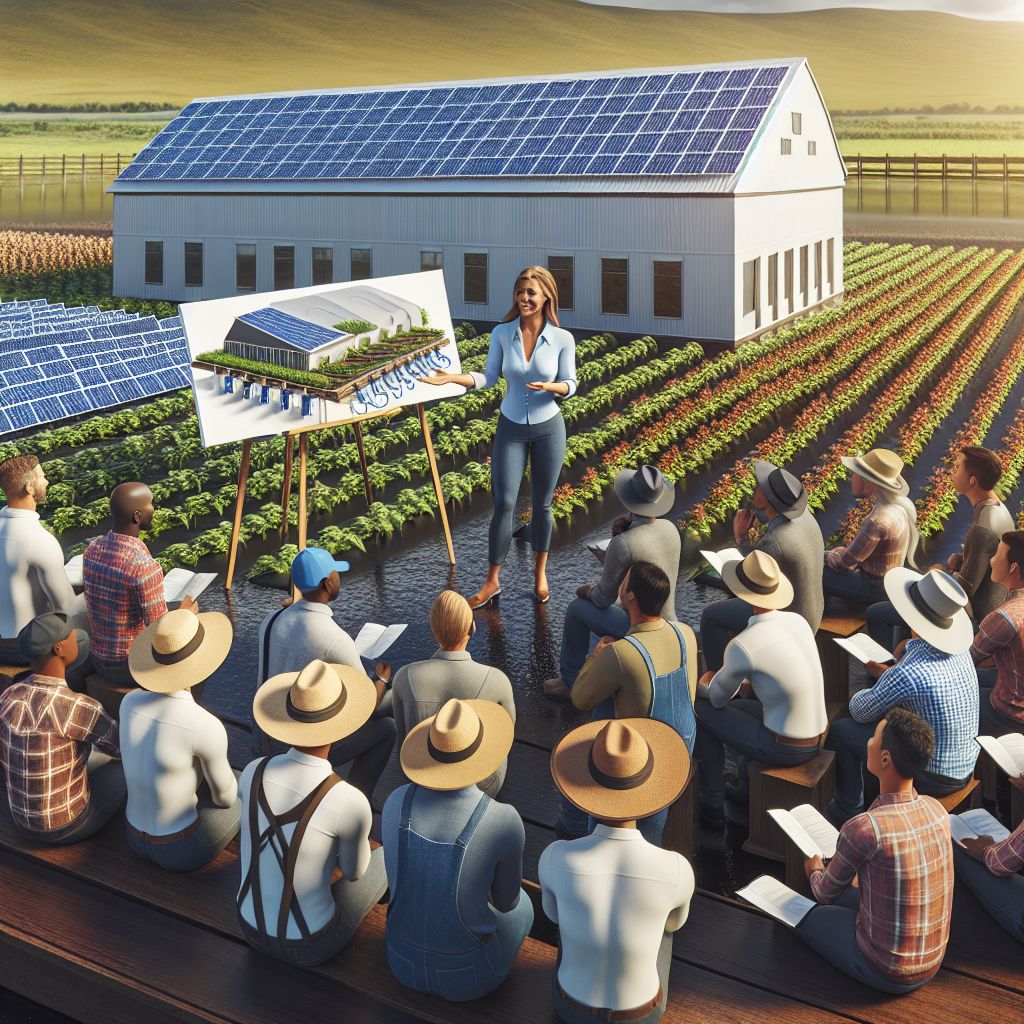
Empowering farmers with the knowledge to make smart, sustainable choices is crucial for the future of agriculture. One such choice is the adoption of solar-powered irrigation systems, which can lead to significant improvements in crop yields and farm efficiency. Here are the key takeaways:
Key Takeaways
-
Solar-powered irrigation systems can drastically reduce energy costs and increase water efficiency on your farm.
-
Installing a solar irrigation system can lead to consistent and precise watering, resulting in higher crop yields.
-
Maintenance for solar irrigation systems is typically lower than traditional systems, saving you time and money.
-
Government incentives may be available to help offset the initial investment in solar technology.
-
By adopting solar-powered irrigation, you’re contributing to a sustainable future and reducing your farm’s carbon footprint.
Revolutionizing Agriculture: The Power of the Sun
As a farmer, you know that the sun is your crop’s best friend. It’s also your ally when it comes to irrigation. Solar-powered irrigation harnesses the sun’s energy to power pumps and systems that deliver water to your crops. This technology is not just a trend; it’s a game-changer that can make a world of difference for your farm’s output and overhead.
Cutting-Edge Benefits of Solar Irrigation
When you switch to solar irrigation, you’re not just saving on your energy bill. You’re investing in a system that provides a reliable water supply to your crops, even during the hottest days when the grid might falter. The energy from the sun is plentiful and free, so once you’ve covered the initial setup costs, the savings start stacking up.
Bolster Your Farm’s Productivity
With solar-powered irrigation, you’re in control. You can set up systems to water your crops exactly when they need it, avoiding water waste and ensuring that each plant gets the right amount of hydration. This precision leads to healthier plants and, you guessed it, larger harvests.
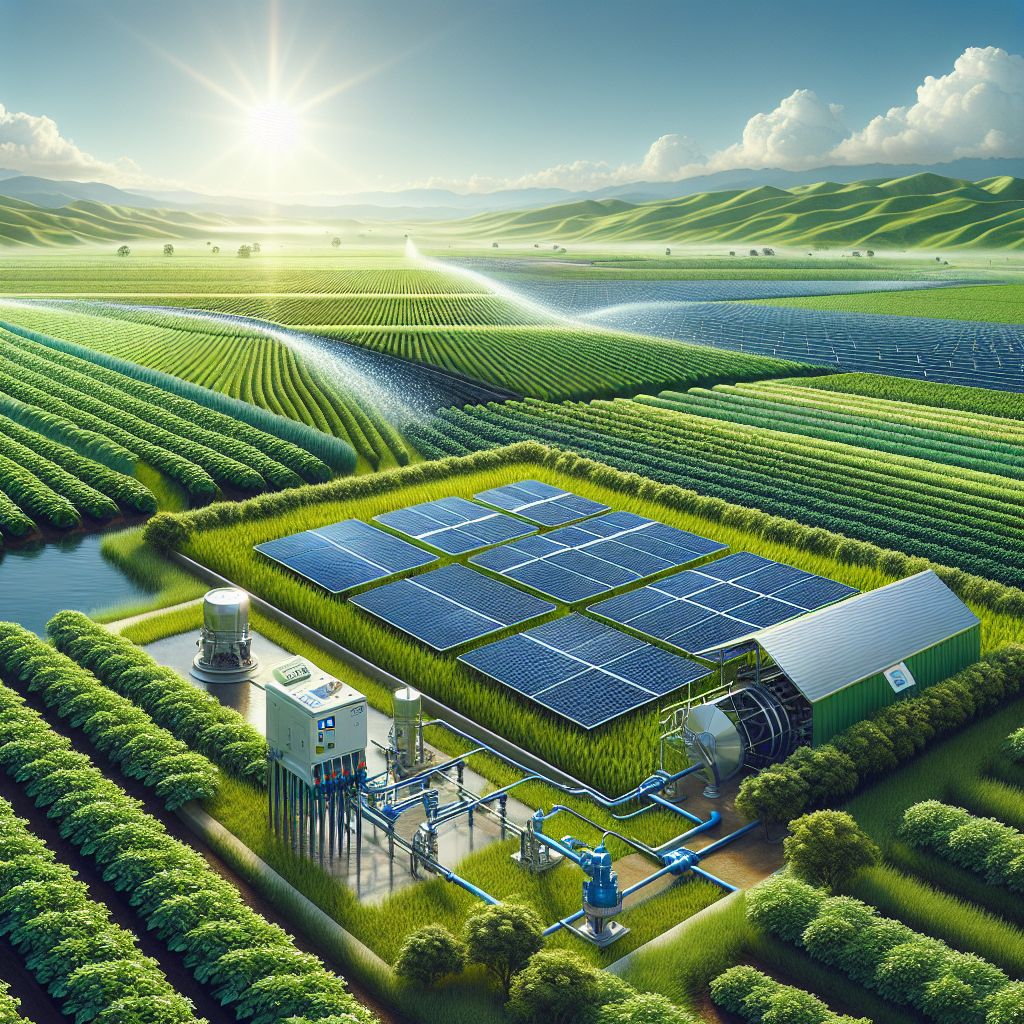
The Rise of Solar-Powered Irrigation Will Increase the Farms Efficiency.
Solar irrigation systems are a smart response to the rising costs of traditional energy sources and the increasing unpredictability of rainfall due to climate change. They offer a sustainable solution to these challenges, helping your farm stay productive and efficient.
Solar Irrigation Basics Will Boost the Crops Yield
It’s simple: healthy plants need the right amount of water at the right time. Solar-powered irrigation systems use technology to ensure that your crops receive water on a consistent schedule, which is crucial for optimal growth. This kind of reliability is what leads to a bountiful yield at harvest time.
Key Components of a Robust Solar Irrigation System that Will Help the Crops Yield
Let’s break down the essentials of a solar irrigation system. You’ll need solar panels to capture the sun’s energy, a pump to move the water, and a controller to automate the process. Selecting the right components for your farm’s needs is vital. You want a system that’s powerful enough to handle your acreage but not so large that it wastes resources.
Here is the table showing how solar-powered irrigation can increase the efficiency of farms.
| Benefit | Description |
|---|---|
| Reliability and affordability of energy | Solar-powered irrigation systems provide reliable and affordable energy for irrigation, potentially reducing energy costs compared to fossil fuel or electricity-powered systems. 1, 2, 3 |
| Increased water availability and accessibility | Solar irrigation facilitates an adequate and reliable water supply, improving water accessibility and affordability for farmers. This allows farmers to irrigate more land and cultivate a greater diversity of crops. 2, 3 |
| Improved irrigation efficiency | Solar-powered irrigation systems often use more efficient irrigation techniques like drip or sprinkler irrigation, reducing water waste and increasing the technical efficiency of crop production. 1, 2, 3, 4 |
| Reduced environmental impact | Solar irrigation is a clean, low-emission technology that can help mitigate the environmental damage caused by fossil fuel-powered irrigation. 1, 3, 4 |
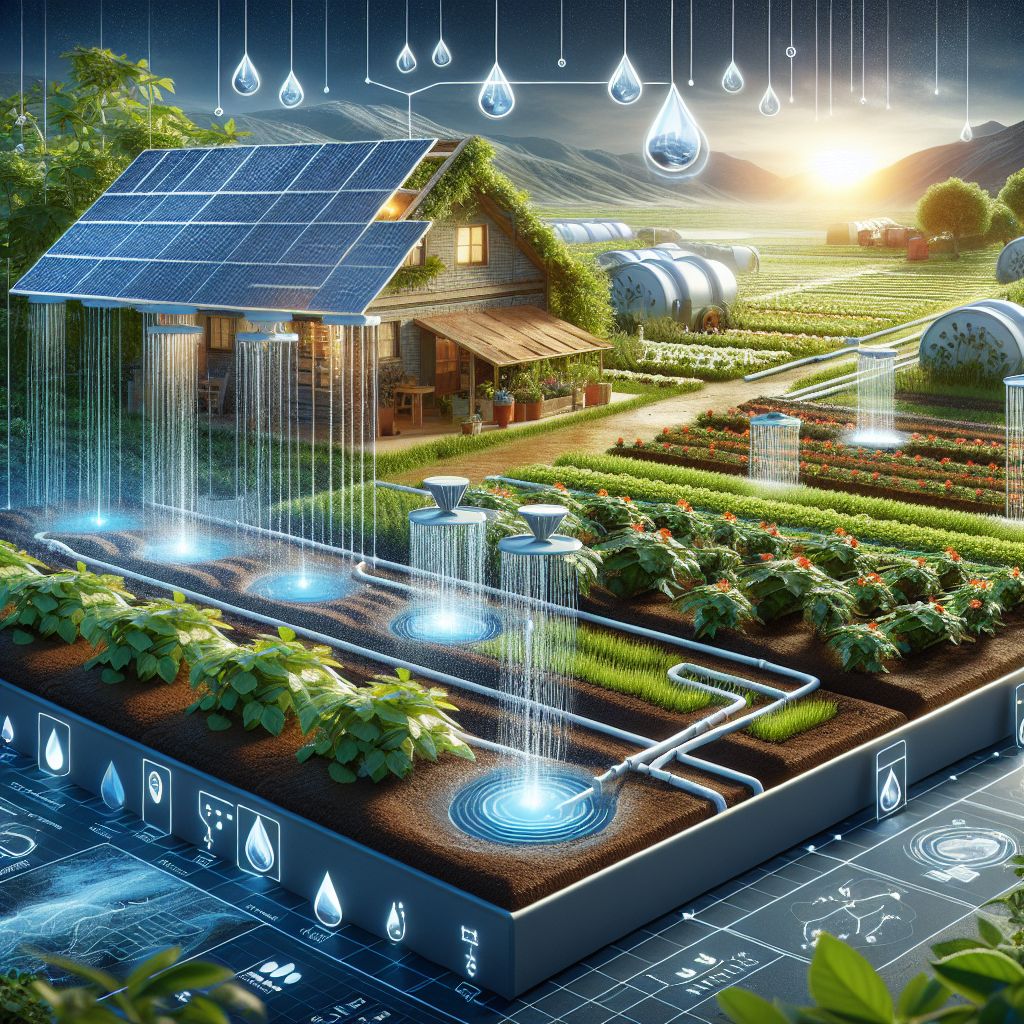
Efficient Water Use for Bumper Crops
Water is a precious resource, and efficient use is a cornerstone of sustainable farming. Solar-powered irrigation helps you use water wisely, with systems that can be adjusted for the amount of sunlight available and the specific water needs of your crops.
Strategies for Water Conservation
Conserving water isn’t just good for the environment; it’s good for your bottom line. Drip irrigation, for instance, delivers water directly to the roots of your plants, minimizing evaporation and runoff. Pairing this technique with solar power maximizes both water and energy efficiency.
Optimizing Irrigation Schedules with Solar Technology
One of the smartest features of solar-powered irrigation systems is their ability to operate on an automated schedule. This means you can set your system to water at the coolest times of day, reducing water loss to evaporation and ensuring that your plants get the hydration they need to thrive.
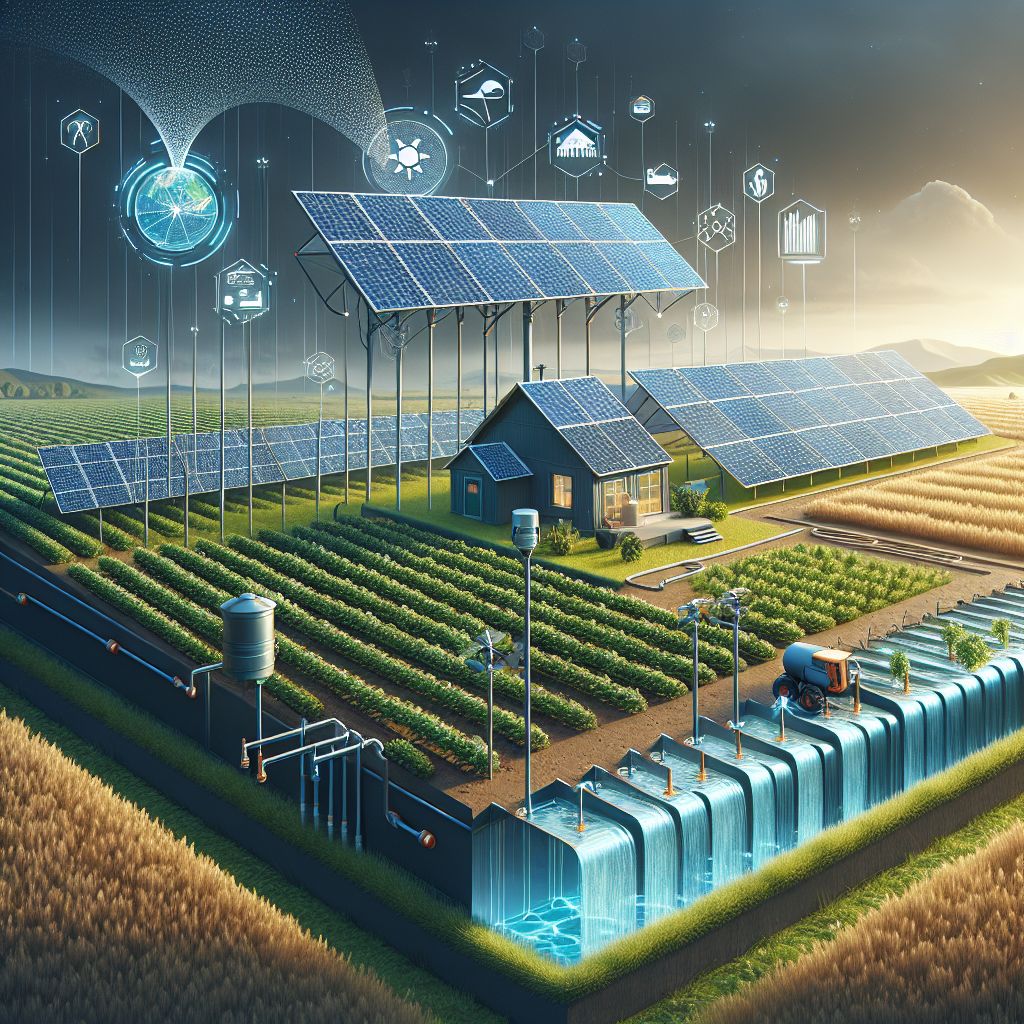
Operational Advantages for Farmers
Choosing solar irrigation comes with a suite of operational benefits. For starters, solar systems are durable and have fewer moving parts than conventional systems, which means less wear and tear. They’re also immune to power outages, ensuring your crops get watered no matter what.
-
Solar systems can operate independently of the power grid, providing reliable irrigation even in remote locations.
-
The simplicity of solar systems means they’re often easier and cheaper to maintain than traditional irrigation systems.
-
Automation allows for precise watering schedules, which can be adjusted based on weather patterns and crop needs.
Cost-Efficiency and Energy Independence are two significant operational advantages that solar-powered irrigation systems bring to the table. By harnessing the sun’s power, you’re not just doing the environment a favor, you’re also slashing your farm’s energy bills. Imagine a world where you’re not at the mercy of fluctuating fuel prices or dependent on an unreliable electrical grid. Solar irrigation gives you the freedom to operate off-grid, providing a consistent and cost-effective water supply to your crops.
Maintenance and Durability of Solar Equipment are other key operational benefits. Solar panels and components are built to last, often with warranties stretching 20 years or more. Unlike traditional mechanical irrigation systems, solar-powered setups have fewer moving parts, which means there’s less that can go wrong. This translates into lower maintenance costs and less downtime, ensuring your crops get watered without interruption.
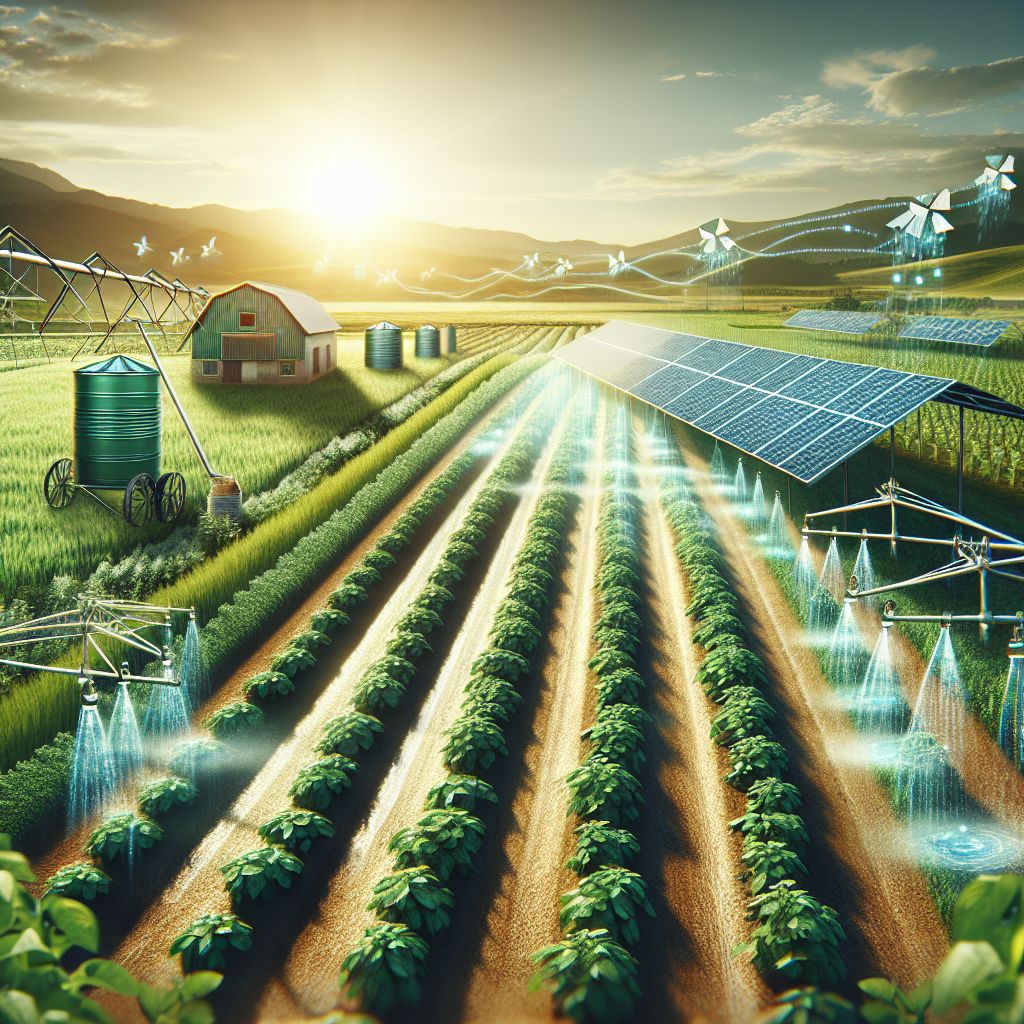
Sustainable Farming and Environmental Stewardship
By choosing solar-powered irrigation, you’re not just investing in the productivity of your farm; you’re also taking a stand for the planet. Sustainable farming is about meeting today’s agricultural needs without compromising the ability of future generations to meet their own. Solar irrigation is a key player in this mission, as it leverages a clean, renewable energy source and helps conserve water resources.
Reducing the Carbon Footprint through Solar Energy
Every gallon of diesel or kilowatt-hour of grid electricity you replace with solar energy significantly reduces your farm’s carbon footprint. By choosing solar, you’re contributing to the global effort to combat climate change. This not only feels good ethically, but it also resonates with consumers who are increasingly seeking out sustainably-produced products.
Conserving Natural Resources for Future Generations
The responsible use of natural resources is a cornerstone of sustainable agriculture. Solar-powered irrigation systems contribute to this by minimizing water waste and relying on the endless energy supply provided by the sun. By doing so, you’re helping ensure that the soil, water, and biodiversity are preserved for the farmers of tomorrow.
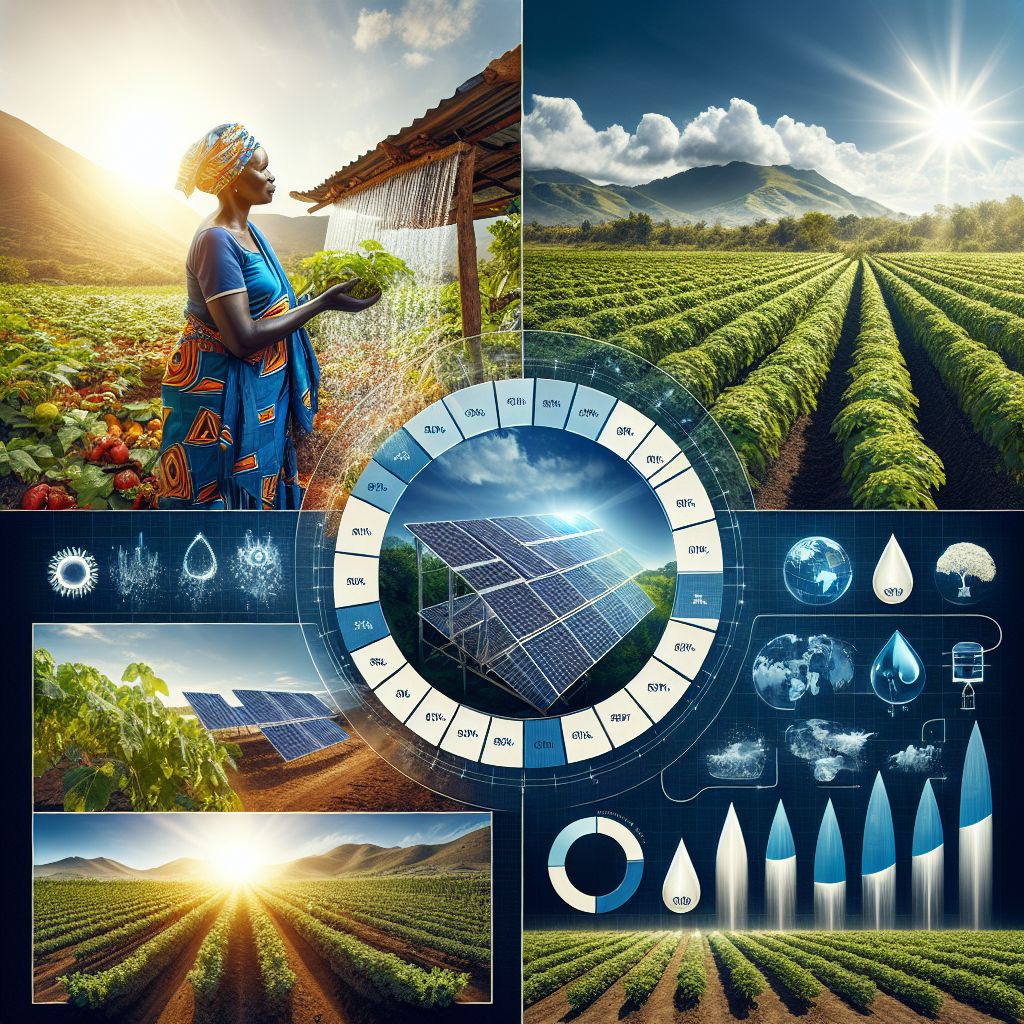
Real-World Success Stories
Across the globe, farmers are reaping the benefits of solar-powered irrigation. In arid regions, where water is scarce and the sun is plentiful, these systems have transformed barren lands into fertile fields. But you don’t have to take my word for it; the success stories speak for themselves.
Case Studies: Solar-Powered Irrigation in Action with Improved Crop Yield
Take, for example, a smallholder farmer in Kenya who switched to solar irrigation and saw her yields increase by 300%. Or the vineyard in California that cut its water usage by 30% while improving the quality of its grapes. These are real results from real farmers who’ve made the switch to solar.
Lessons Learned and Best Practices
The key to successful solar irrigation is proper planning and execution. Start by assessing your water needs and solar exposure. Then, work with a reputable provider to design a system that’s tailored to your farm. Remember, the goal is not just to install solar panels but to create a harmonious system that balances energy production with efficient water use.

Navigating Challenges and Crafting Solutions
Adopting new technology always comes with its set of challenges. For solar-powered irrigation, these might include the initial investment, finding the right technology for your specific needs, or navigating the regulatory landscape. However, with the right approach, these challenges can be overcome.
Addressing Common Barriers to Adoption
The upfront cost of solar irrigation systems can be a hurdle, but it’s important to consider the long-term savings and potential for government incentives. Additionally, educating yourself on the different types of solar pumps and irrigation methods will help you make an informed decision that’s right for your farm.
Innovative Approaches to Overcoming Obstacles
When facing the challenges of adopting solar-powered irrigation, innovative thinking is key. Consider partnering with local agricultural agencies or forming cooperatives to share the costs and benefits. Additionally, keeping abreast of new solar technologies and installation techniques can lead to more cost-effective and efficient systems.
| Challenge | Potential Solution |
|---|---|
| Initial Investment | – Explore financing options like loans, grants, or leasing programs to reduce upfront costs. 1, 2, 3 – Calculate the long-term cost savings to justify the initial investment. 1, 2 |
| Finding the Right Technology | – Conduct thorough research on different solar irrigation systems and their features. 1, 2, 3 – Consult with experts or local suppliers to identify the best fit for your specific needs and location. 1, 3 |
| Navigating Regulatory Landscape | – Familiarize yourself with relevant regulations and permits required for solar irrigation installation. 1, 3 – Collaborate with local authorities and agencies to ensure compliance and streamline the process. 1, 3 |
| Integration with Existing Infrastructure | – Assess the compatibility of the solar irrigation system with your current water distribution and storage infrastructure. 3 – Work with professionals to seamlessly integrate the new system with your existing setup. 3 |
| Maintenance and Upkeep | – Establish a regular maintenance schedule to ensure optimal performance and longevity of the solar irrigation system. 1, 3 – Provide training to your team on proper maintenance and troubleshooting procedures. 1, 3 |
| User Adoption and Education | – Engage with the local community to raise awareness about the benefits of solar-powered irrigation. 3 – Provide training and support to farmers and users to ensure smooth adoption and effective utilization of the technology. 1, 3 |
By addressing these challenges proactively and implementing the suggested solutions, you can navigate the transition to solar-powered irrigation more effectively and unlock the long-term benefits of this sustainable technology.
Frequently Asked Questions
How Does Solar-Powered Irrigation Work?
Solar-powered irrigation systems use solar panels to convert sunlight into electricity. This electricity then powers a pump that draws water from a source—like a well, pond, or river—and delivers it to your crops through a network of pipes and emitters. It’s clean, renewable, and can be set up to run automatically.
Is Solar-Powered Irrigation Cost-Effective?
Yes, it can be very cost-effective. While the initial investment might be higher than traditional systems, the ongoing savings on energy costs and the potential for increased crop yields make it a smart financial decision in the long run. Plus, there are often incentives and grants available to offset the upfront costs.
Can Solar Irrigation Systems Be Used in Any Climate?
Solar irrigation systems are versatile and can be used in a wide range of climates. They’re particularly beneficial in sunny regions but can also be effective in less sunny areas with the right design. The key is to size your system correctly based on your location’s solar insolation levels and your water needs.
How Do I Maintain a Solar-Powered Irrigation System?
Maintenance for solar irrigation systems is generally minimal. Keep solar panels clean and free of debris, check connections for corrosion, and ensure that pumps and controllers are functioning properly. Regularly inspecting and maintaining your system will help ensure it operates at peak efficiency.
What Are the Long-Term Benefits of Solar-Powered Irrigation?
The long-term benefits of solar-powered irrigation include significant reductions in energy costs, increased water conservation, higher crop yields, and a smaller carbon footprint. By investing in solar irrigation, you’re also enhancing your farm’s resilience to power outages and water scarcity.
For example, a farmer in Spain installed a solar-powered irrigation system and reduced his energy costs by 70%, allowing him to invest more in other areas of his farm. His story demonstrates the tangible benefits that solar irrigation can provide.
Conclusion: Will the Farm’s Crop Yield Improve Enough from a Solar Irrigation System for the Farmer to Invest in?
After considering the benefits, cost savings, and positive environmental impact, it’s clear that solar-powered irrigation systems are a wise investment for farmers looking to improve their crop yields. With proper planning and implementation, these systems can provide a reliable, efficient, and sustainable way to water crops, which can significantly increase yields and profitability. As we face the challenges of climate change and water scarcity, solar irrigation stands out as a beacon of innovation in the agricultural sector, empowering farmers with the knowledge and tools they need to succeed in the 21st century.






